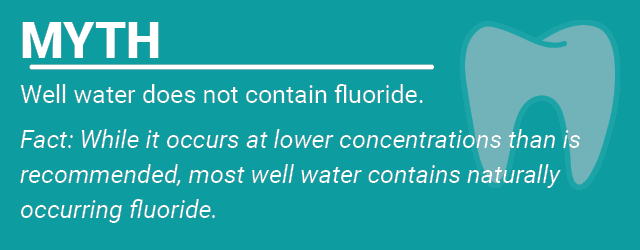Fluoridation is one of the greatest public health successes of the 20th century.
Despite the overwhelming success of community water fluoridation at improving oral health outcomes, misinformation continues to circulate about its risks and benefits. From those that call fluoride a communist plot (really) to others that call it a deadly killer, myths about the element are widespread. In fact, over the last few decades, anti-fluoride movements have gained large followings across the country.
Separating Fact from Fiction
In reality, fluoride in municipal water supplies is one of the most important and effective advances in the history of public health.
Since its first application in Grand Rapids, Michigan in 1945, the addition of fluoride to municipal water supplies has dramatically improved oral health outcomes across income levels, age groups, racial lines, and geographic areas.
(To learn more about how income, race, and geography impact oral health, check out our previous blog post on systemic barriers impeding oral health care access)

Is fluoride expensive?
At less than 50 cents per person per year, water fluoridation is an incredibly cost-effective treatment that has proven to reduce cavities in children and adults, even helping repair tooth decay in its early stages.
But isn’t fluoride an unnatural substance we shouldn’t consume?

No. Fluoride occurs naturally in a wide variety of foods and beverages. In fact, if you’ve ever eaten fried shrimp, mashed potatoes and gravy, or raisins, you have consumed fluoride at higher concentrations than you do when drinking fluoridated tap water!
If you want to know more, check out this USDA report on foods and beverages that contain naturally occurring fluoride.

The truth is that we naturally consume fluoride every day.
However, while there is fluoride in all sorts of foods and beverages, it generally doesn’t naturally occur at high enough levels to benefit our teeth.
Adding fluoride to tap water hasn’t subjected us to a toxic hazard. On the contrary, community water fluoridation has simply ensured that many people have the same access to it in healthy, beneficial quantities.
If fluoride is in our water at higher concentrations than occur naturally, does that make it dangerous?

Not at all. Consider this:
For a 165-pound adult, 12 standard glasses of water consumed quickly is considered a lethal dose. By comparison, in order to obtain a lethal dose of fluoride, you would have to consume more than 15 12-ounce glasses of fluoridated tap water in rapid succession.
So how does fluoride work?
In the course of a day, we all consume foods and beverages that introduce cavity-causing bacteria to our mouths. That bacteria weakens our enamel — the hard, outer coating that protects our teeth.
When we brush our teeth with fluoridated toothpaste, eat fluoride-containing food, or drink fluoridated tap water, fluoride replaces hydroxide ions in our enamel. This process strengthens our teeth, prevents decay, and can even help reverse existing decay in its early stages.
How can I make sure I’m getting enough fluoride?
The best thing you can do to protect your teeth is to make sure that you brush for two minutes twice a day with a fluoride toothpaste. You can also use fluoride mouthwash, and make sure to drink fluoridated tap water to keep your teeth happy and healthy!
And yes, kids can use fluoride too. The rule of thumb is, “smear up to three years,” which means you should use just a smear of fluoride toothpaste to brush a child’s teeth until they are three years old. From 3-6 years old, use a pea-size amount of fluoride toothpaste.

NCOHC is a program of the Foundation for Health Leadership & Innovation (FHLI). For more information and to stay up-to-date, subscribe to the NCOHC newsletter. If you are interested in becoming an NCOHC member, you can also fill out our membership form. It’s free!
Sources for more information:


